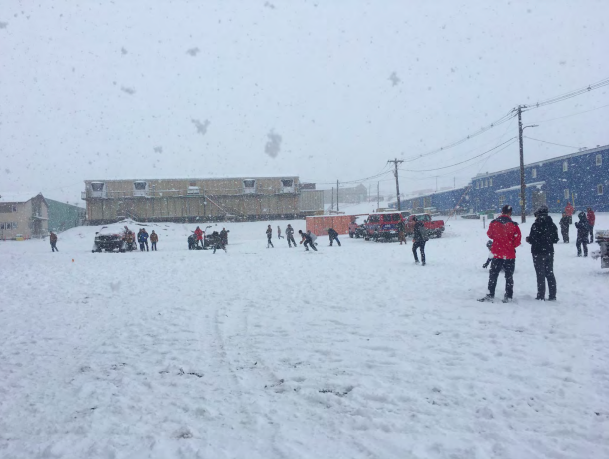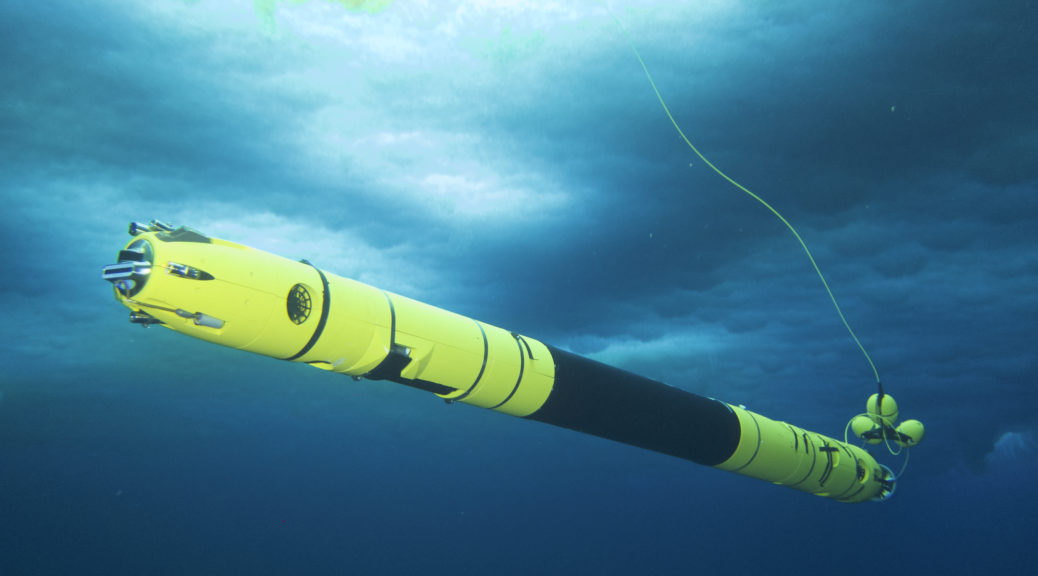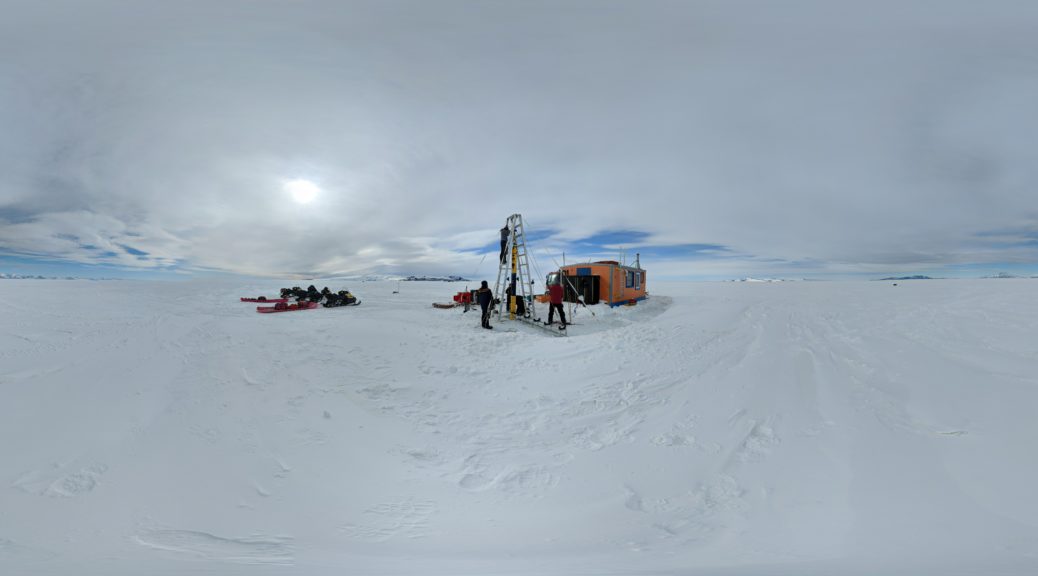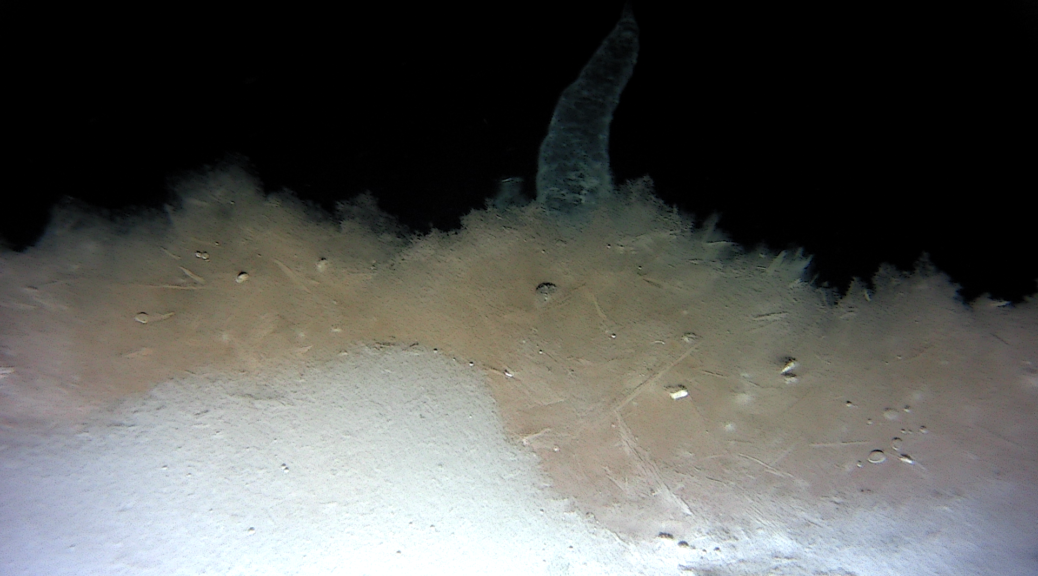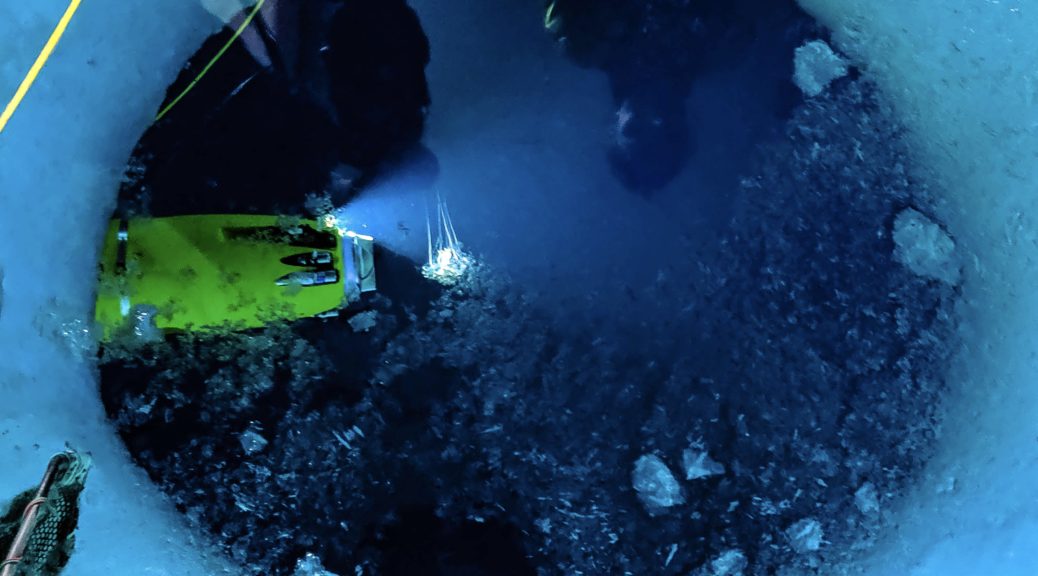Well, folks, that time we’ve been waiting for is upon us: the Icefin teams are about to attempt dives at the grounding zones of the Kamb Ice Stream and Thwaites Glacier!


RISE UP at Kamb Ice Stream Camp with ANZ
In exciting news, all members of the Icefin KAMB team are now on site at the edge of the Ross Ice Shelf, and are as we type working towards Icefin’s first dive through the grounding zone. Matt, Justin, Ben, Peter, and Enrica have been busy preparing Icefin and helping with general duties at the Antarctica New Zealand field camp. Hot water drilling at the site began this week and science is underway! Keep your eyes on @the_Ross_Ice_Shelf_Programme on Instagram for more updates! When we’re able to get a few updates and maybe an image or two we will also update you on Icefin’s social media.


Icefin team headed out to Thwaites Glacier
The International Thwaites Glacier Collaboration program has been waiting for a break in the weather at WAIS divide camp to get to move folks out to camp. In a week of emotional highs and lows, the weather finally broke in our favor and the first flights to get ITGC personnel into WAIS divide camp and on to their field sites happened late Wednesday, with MELT’s own James Wake, along with USAP safety lead Loomy, and GHC member/radar guru Seth Campbell made it out! The team of three made it to the grounding zone down stream (GZDS) Site where the first hot water hole will be drilled. The safety team was able to land at the site and successfully establish camp. Since then, the intrepid pilots of the Twin Otter and Basler aircraft, both USAP flown by Kenn Borek Air out of Canada and the British Antarctic Survey TO, have completed many rotations to start bringing gear out to the camp. The Basler being able to land at both Cavity Camp (where colleagues in TARSAN will be working) and at GZDS has meant that much faster gear delivery has been possible, making up time from the early season weather delay.
Later in the week the second wave of the team, consisting of the British Antarctic Survey drill and science team, made it on a flight out of McMurdo to WAIS, where Paul Anker and James Smith went to the LTG field camp to break all out all of the drill equipment which was staged over winter to be sent to GZDS. The remaining team, PI Keith Nicholls, mountaineer Catrin Thomas, and Pete Davis proceeded on to the camp site at GZDS where they are establishing camp and receiving gear. The Icefin portion of the MELT team, Twin Otter and Basler aircraft, both USAP flown by Kenn Borek Air out of Canada and the British Antarctic Survey TO, have completed many rotations to start bringing gear out to the camp. The Basler being able to land at both Cavity Camp (where colleagues in TARSAN will be working) and at GZDS has meant that much faster gear delivery has been possible, making up time from the early season weather delay. Later in the week the second wave of the team, consisting of the British Antarctic Survey drill and science team, made it on a flight out of McMurdo to WAIS, where Paul Anker and James Smith went to the LTG field camp to break all out all of the drill equipment which was staged over winter to be sent to GZDS. The remaining team, PI Keith Nicholls, mountaineer Catrin Thomas, and Pete Davis proceeded on to the camp site at GZDS where they are establishing camp and receiving gear. The Icefin portion of the MELT team, consisting of Britney, Dan, and Andy are currently all packed up and eagerly waiting their flight to WAIS Divide, which is waiting on good weather to leave MCM. They’ll be joined by PI David Holland and Aurora Basinski-Ferris, as well as members of the TARSAN team. In addition to all the oceanographers, the team was also joined by the final MELT field team members lead by Kiya Riverman, who will be a few days behind the Icefin and NYU teams.

Hurry Up and Thwaites
During the weather delays, the Icefin team has kept as busy as possible. It’s rare to get a few weeks to catch up, particularly from generally exasperated PI Britney. We’ve used the extra time to make progress in several important areas. Britney has finalized her chapter for the upcoming Planetary Astrobiology book (University of Arizona Press) and been trying to help lead Editor Vikki Meadows as much as possible. She also submitted a Nature Geoscience paper with the Dawn team, and sent back revisions on two planetary science papers by current and former students that should be soon submitted. LPSC abstracts have also been edited for the grad and undergrad students in Atlanta. Now she’s trying to finish proofs on the chapter and this weekly-ish update!! Andy has been working hard to bring the in situ microscope designed for Icefin closer to being ready or field operations, and has made great progress with the extra time. Dan has been working on the redesign of Icefin’s power system and collecting various media to pass on to the BBC and NOVA crews working with the MELT team. Dan is looking forward to helping be team cameraman along with David and Aurora while we’re out at Thwaites. And while we would all have rather been out in the field, having the chance to go to the Helo Hanger concert was a social highlight of the season. McMurdo is an incredibly artistic and talented community, and getting to see several of our friends and colleagues play life music is always a treat, and ran the gamut from folk music to indie rock to a Green Day cover band.




First and foremost, the WAIS Divide and LTG camp staff have been real heroes, working with a fraction of the people they had planned to get the camp up and running, establishing runways and weather reports, and supporting the flotilla of small aircraft who have been keeping the Thwaites dream alive! Cargo movements and camp activities have been underway despite the weather and small crew, the camp mechanics have done a fabulous job getting the traverse equipment up and running, and the carp team now has the camp ready for full time science support. They’ve been doing all of this in heaps of Condition 1 weather, i.e. REALLY HORRIBLY AWFUL. We owe these guys a ton!




Michelle Babcock from the GT Icefin team will be sending out some blurbs from us while we’re out in the field. Enrica and crew will pick up the bulky emails and photos when they return from Kamb, currently sometime just before or after the new year. Brit, Dan and Andy will be out in the field until probably middle to late February, so look for our next check in around Feb 1. Happy holidays to you all out there, and thanks so much for everything you do to support us, from watching cats to sending treats, to fixing machinery, and everything in between!
This year the field team for Icefin consists of:
Britney Schmidt, Matt Meister, Dan Dichek, Anthony Spears, Justin Lawrence, Ben Hurwitz, Andy Mullen, Peter Washam, and Enrica Quartini.
RISE UP: https://live-schmidt-astro-cornell.pantheonsite.io/project-rise-up/
MELT: https://live-schmidt-astro-cornell.pantheonsite.io/thwaites-melt/
ITGC: https://thwaitesglacier.org
RISP: https://www.instagram.com/the_ross_ice_shelf_programme/
For more updates, pictures, and videos, find us on Facebook, Instagram, and Twitter @icefinrobot
